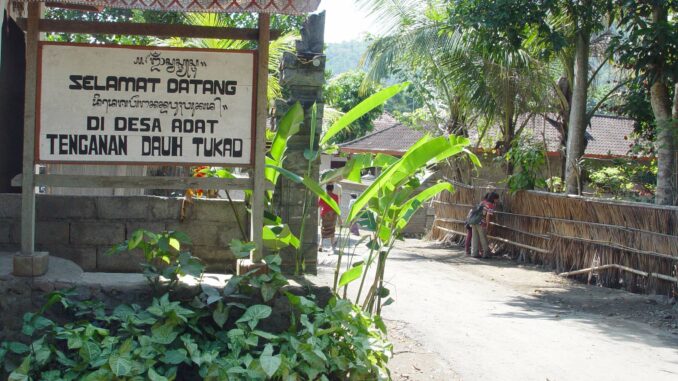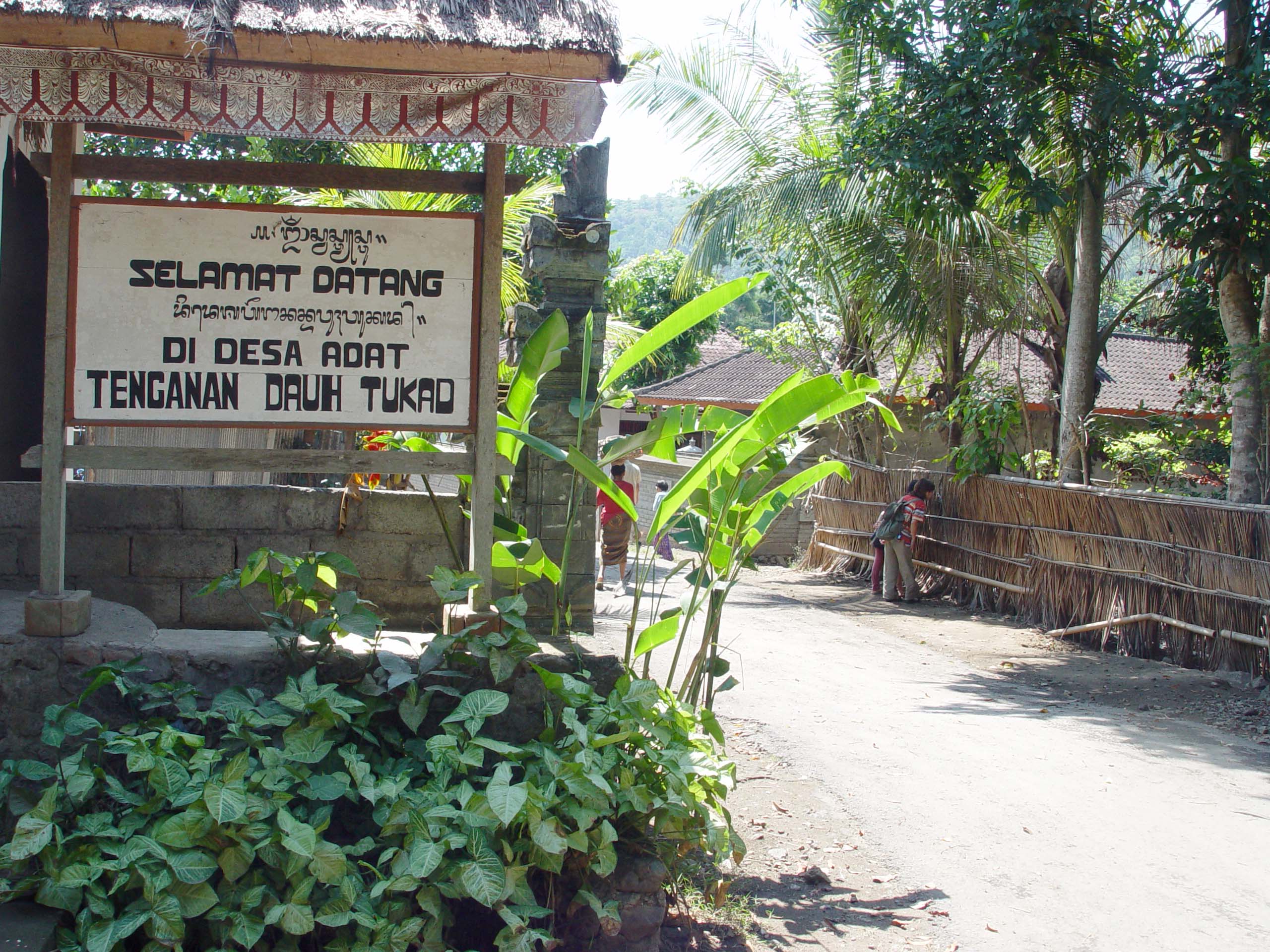
Table of Content:
The village of Tenganan – its full name is Tenganan Pegringsingan – on Bali is one of the few villages at all where the culture that was common in this region before the arrival of Hinduism has remained alive.
Since the inhabitants have strictly refused any cultural and religious influences from outside for centuries, a visit to this village offers an extremely charming insight into a way of life that has developed on Bali independently of other influences. For this reason, Tenganan village is a very popular destination for a day trip when staying in Bali. Below are all the details worth knowing about a trip to Tenganan.


Who lives in Tenganan village?
The inhabitants of the village belong to the Bali Aga tribe, a very small people, but one that still exists in modern times, with very clear distinctions from other cultures. Of course, the conveniences of modern times have also found their way here. Nevertheless, visitors to the village do not expect an artificially created or museum-like world for tourists.
Here you actually visit all that still makes up the life of the Bali Aga today.
What is the situation in Tenganan village?
The village consists of three different areas: the part with settlements, that with established plantations and the rice fields of Tenganan. The houses in the village are partly masonry and partly wooden buildings, all of which have only one floor. The roofs consist of a balic form of thatched roofs.
The architecture of the village houses is as typical for the Bali Aga as it is unique in this form worldwide. They are all located along the main road that runs through the village from north to south. The narrow entrances of the houses allow a maximum of one person at a time to pass through them. Often small staircases lead up to the entrances a few dozen centimeters. Access to the village is limited by a large gate in the south of the village.
Traditions in Tenganan village
Besides its architecture, the village also attracts visitors for its centuries-old traditions, which are still practiced here. Unlike in the past, they are happy to welcome visitors from all over the world. Thus, there is a tower called Kul-Kul in the middle of the village, which is equipped with a kettledrum that is beaten 21 times every morning.
An artisan tradition in the village is to produce textiles from the Geringsing fabric, which is complicated to make. This substance is said to have mythical abilities, including the defense against disease. The manufacturing process of this worldwide known material is still practiced by the villagers themselves. In turn, they have the time to do this because they have their rice fields tilled by people outside the village. In return, they are remunerated with a share of the yield from the harvest. The village of Tenganan is the only remaining place at all where the production of Geringsing cloth is practiced. To give an idea of how complex the manufacturing process is, it is worth mentioning that it takes about three years of time from the beginning of the process to the achievement of the desired end product.
The ceremony by means of which the boys and girls of the village are admitted into the circle of adults is also charming to watch. Dressed in such Geringsing textiles, they are carried by their father on the right shoulder. At the end of the procession, the now also adults receive a keris (also called kris), an elaborately curved, rather large dagger.
“Pandanic wars” as a folk festival
However, this should not give a false impression of the Bali Aga people, who are considered remarkably peaceful. Likewise, the people of Tenganan welcome their visitors with great friendliness.
Nevertheless, ritualized fights between two participants are also part of the culture that is cultivated here in the village. For 30 days in June of each year, the “Pandan Wars” are held, in which young men demonstrate their martial arts in duels against each other, without seriously injuring each other. This facility is perhaps the greatest highlight of the traditions cultivated in Tenganan. If you don’t want to miss them when visiting the village, you should plan your trip here to visit Tenganan on a day in June.
The traditions of agriculture and animal husbandry and breeding practiced by the inhabitants of Tenganan are also very peculiar, although not as easily accessible to visitors as the previously mentioned traditions.
Where is Tenganan located exactly?
The village is located in the northwest of Candi Dasa. The main road passing here is about 5 kilometers away.
How have the inhabitants held their own against outside influences for so long?
The tradition in the village required that their inhabitants could only marry other inhabitants of the village. If a resident decided to take someone from outside as a spouse, he or she had to leave the village and move his or her center of life to a place away from the village.
The person was still allowed to visit the village, but not to live there permanently. This strict regulation was not softened until the 1970s. Since then, they have also opened up to tourism. However, the internal cohesion in the village remains exceptionally high.
Conclusion of a visit to Tenganan village
A visit to the village of Tenganan offers an adventure rarely experienced anywhere in the world. Here a small people has preserved its ancient traditions by isolating itself from outside influences. Nevertheless, it now allows and welcomes visitors from the rest of the world. The traditions celebrated here are truly unique and very worth seeing.
Moreover, a visit to the village is suitable for all ages, gladly with families, where both parents and children can share many new experiences. Apart from walking on gravel and earth paths, no special physical mobility is required to fully explore this village worth seeing. In addition, the location of Tenganan, surrounded by numerous hills, provides a pleasant climate and very good air. So, also in this respect, a trip to Tenganan is recommended.
